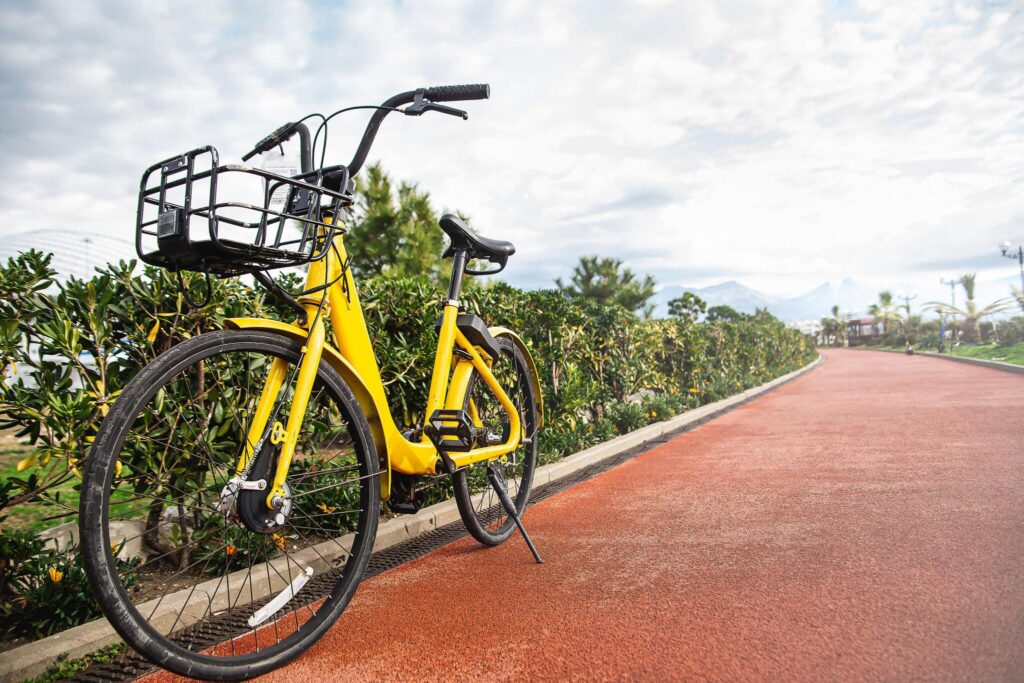Amid the hustle and bustle of contemporary life, bicycles have emerged as a beacon of sustainability, offering an eco-friendly, cost-effective, and health-conscious alternative to traditional vehicular transport. Their rise in popularity underscores a collective shift towards more responsible modes of transportation, a movement that not only champions physical well-being but also environmental stewardship. However, there’s an often overlooked yet vital component that supports this green revolution on two wheels: the humble bicycle stand. These essential fixtures of urban architecture play a critical role in safeguarding our valued bikes, providing a secure anchor that encourages cycling as a viable and preferred mode of transportation.
The value of bicycle stand extends beyond their functional purpose; they are fundamental pillars that support and promote cycling culture within communities. They offer peace of mind to cyclists, knowing their bicycles are securely stored and protected against theft and damage. By facilitating convenient and safe parking solutions, bicycle stands play an instrumental role in encouraging the adoption of cycling, contributing to the reduction of traffic congestion and pollution, and fostering a healthier, more sustainable urban environment.
In this blog post, we’re taking a closer look at the humble bicycle stand, a key player in the global push towards sustainable urban mobility. By examining the innovative designs and strategic placement of these stands, we uncover how they not only serve the immediate needs of cyclists but also how they are integral in shaping the cities of the future. Join us as we explore the transformative power of bicycle stands in promoting cycling and enhancing the livability of our urban spaces, steering us towards a cleaner, greener, and more interconnected world.
Bicycle Stand Explained: Unleash Your Mechanic
By the conclusion of this guide, readers will not only possess the insights to select the perfect bicycle stand for their needs but also comprehend the vital role these structures play in fostering a culture of cycling and environmental stewardship.

Table of Contents
The Significance of Bicycle Stands:
Bicycle kickstand transcend mere convenience, acting as fundamental tools in promoting cycling as a viable and sustainable mode of transportation. Well-placed and thoughtfully designed bicycles stands can influence cyclists’ decision-making, encouraging them to choose bicycles over cars, thereby aiding in the reduction of urban traffic and environmental pollution. Additionally, secure and accessible bicycle stands deter theft and damage, making cycling a more attractive and feasible option for daily commutes and leisurely rides.
Varieties of Bicycles Stands:
To make an informed decision, it’s crucial to be familiar with the different types of bicycles stands available:
Traditional Stands: Commonplace and straightforward, these stands support the bicycle by its frame.
Vertical Stands: Designed to conserve space, vertical stands allow bicycles to be parked upright.
Wall-Mounted Stands: Fixed to walls, these stands are ideal for indoor areas like storage rooms and garages.
Freestanding Floor Stands: These units support bikes in an upright position without the need for wall or ground attachment.
Public Bicycle Sharing Stations: These are designed for communal use, often seen in cities for renting or sharing bicycles.
Selecting the Ideal Bicycles Stand:
The choice of bicycle stand is influenced by various considerations including available space, the necessity for security, and the capacity needed for parking bicycles. Urban environments with limited space might benefit from compact designs like vertical or wall-mounted stands, whereas areas with more room can accommodate traditional stands that support a greater number of bicycles.
Construction and Longevity of Stands:
Bicycle stands are made from a range of materials, each offering distinct durability and security levels. Common materials include:
Steel: Renowned for its robustness and long life, steel is a favored material for outdoor stands.
Aluminum: Appreciated for its lightweight and rust resistance, aluminum is suitable for indoor or partially outdoor uses.
Recycled Plastic: Gaining popularity for its environmental benefits, recycled plastic stands offer durability and weather resistance.

Installation Practices and Upkeep:
Ensuring bicycle kickstand are correctly installed and maintained is essential for their longevity and functionality. This section could explore installation guidelines for various stand types and maintenance practices to keep them in optimal condition.
Security Measures:
For cyclists, the security of their bicycle is a top priority. This part could cover how the design and location of bicycle stands can improve security and provide tips for cyclists on securely locking their bicycles.
Promoting a Bicycle-Friendly Environment:
Bicycle stands play a crucial role in supporting cycling infrastructure and culture. This segment could discuss how entities like corporations, educational institutions, and local governments can enhance cycling ecosystems through strategic investment in bicycle parking solutions.
Future Directions in Bicycles Stand Innovation:
As the popularity of cycling grows, so does the innovation in bicycles stand design and functionality. Anticipated trends, such as bicycle stands equipped with integrated locking systems or electric bike charging capabilities, could be explored in this section.
Conclusion:
Bicycle stands are indispensable elements of the cycling landscape, offering not just practical parking solutions but also contributing to the broader goal of sustainable transportation. By making informed choices about bicycle kickstand selection, installation, and maintenance, and considering factors like security and material durability, cyclists and community planners can greatly improve the overall cycling experience. Looking ahead, the continuous evolution of bicycle stand designs will undoubtedly play a crucial role in the development of cycling-friendly cities and communities.











Trackbacks/Pingbacks